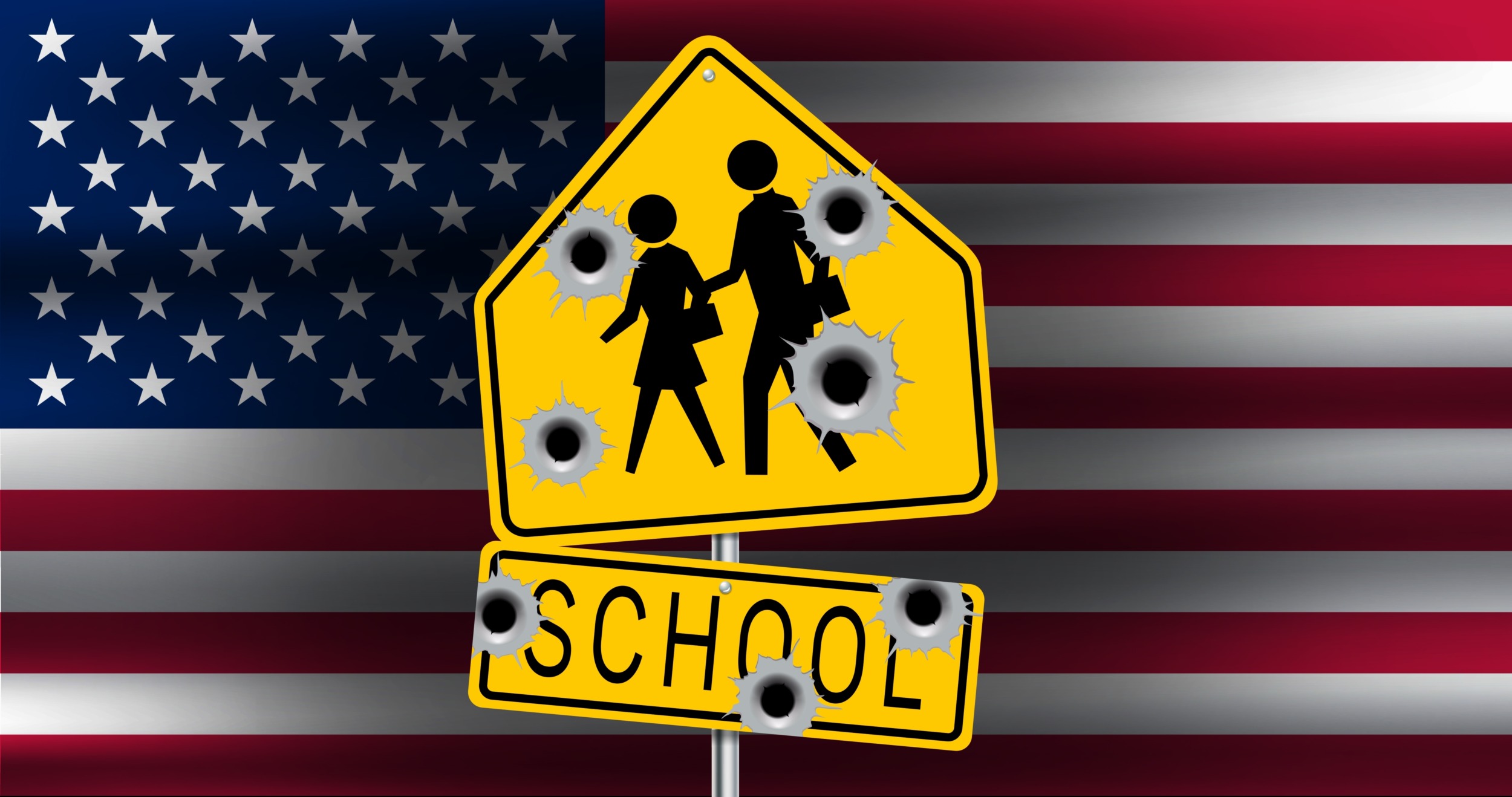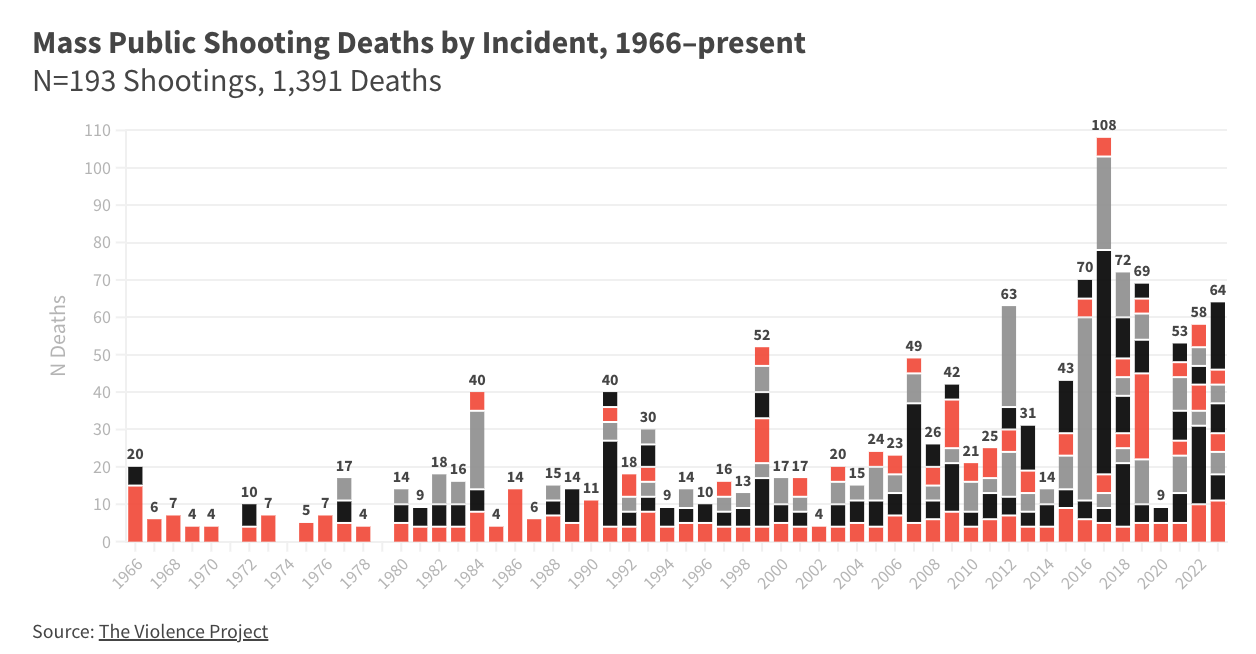Most school shootings don’t just happen out of nowhere – there are typically warning signs.
A year before a 14-year-old boy was arrested for allegedly opening fire in his high school math class in Winder, Georgia, on Sept. 4, 2024 – killing two teachers and two students – authorities visited his home to investigate several anonymous tips about online threats to commit a school shooting.
When they interviewed the boy, who was 13 at the time, he denied making the threats. The father told police there were hunting guns in the house but that the boy didn’t have “unsupervised access” to the weapons.
The FBI said in a statement on the day of the shooting that there was “no probable cause for an arrest” and that local law enforcement “alerted local schools for continued monitoring of the subject.”

Apalachee High School Facebook
This statement from the the Apalachee High School Facebook page was posted on Sept. 5 with this photo: “The Barrow County School System and the broader Barrow Community have tragically lost two cherished students and two beloved teachers. Right now, we are focusing on those injured, hurting, and grieving while we unite as a community to support one another.” (Left to right) Students Christian Angulo, Mason Schermerhorn, and teachers Cristina Irimie, and Richard Aspinwall.
Teachers at the school had been supplied with special identification cards with panic buttons a week prior to the shooting. While authorities credit the ID cards with preventing the shooting from being worse than it was, the action still came too late to stop the killings.
In many ways, the story mirrors dozens of similar stories that we, a sociologist and psychologist, have collected in recent years in our effort to study the lives of mass shooters. It typifies what we believe is one of the biggest challenges that schools face when it comes to averting school shootings: recognizing and acting upon warning signs that school shooters almost always give well before they open fire.
In our interactive database of U.S. mass shootings since 1966 – defined as incidents in which four or more victims were murdered with guns in a public location and with no connection to underlying criminal activity, such as gangs or drugs – there have now been 15 shootings at K-12 schools. The first took place in Stockton, California, in 1989.
Seven of those school shootings occurred in the past decade, including the second and third deadliest on record: Robb Elementary School in Uvalde, Texas, in 2022 (21 dead) and Marjory Stoneman Douglas High School in Parkland, Florida, in 2018 (17 dead). The deadliest in history occurred in December 2012, when 20 children and six adult staff members were murdered at Sandy Hook Elementary School in Newtown, Connecticut.
In all, 138 people were killed in these school shooting attacks and at least 177 people were injured.
What we know about mass school shooters
When the Columbine High School massacre took place in 1999, it was seen as a watershed moment in the United States. At the time, it was the worst mass shooting at a school in the country’s history.
Twenty-five years later, it ranks fourth.
Despite the billions of dollars invested in school safety since Columbine, school shootings have become more frequent and more deadly.
Beyond the mass shootings that grab the headlines, a gun goes off in an American school almost every day.
Our research and dozens of interviews with school shooting perpetrators, survivors and first responders suggest that part of the problem is law enforcement and school officials. Influenced by myths and misinformation about Columbine, they still don’t know enough about mass school shooting trends to recognize the warning signs.
The majority of mass school shootings were carried out by a lone gunman.
Just two – Columbine and the 1998 shooting at Westside Middle School in Jonesboro, Arkansas – carried out by two gunmen.
The choice of “gunmen” to describe the perpetrators is accurate – all but one of the mass school shootings in our database were carried out by men or boys. The average age of those involved in carrying out the attacks was 18 — the youngest was 11 and the oldest was 32. As juveniles, a majority of school shooters used guns borrowed or stolen from parents, caregivers and other significant adults in their lives.
After every school shooting, people say “we never thought something like this could happen in our community.” However, mass school shootings happen most frequently in small suburban or rural communities like Winder, Georgia. There, the suspect is a 14-year-old student at the school. This is unsurprising. Most school shooters have a connection to the school they target. In our database, we found that 15 of the 17 school shooters were either current or former students.
For most perpetrators, the mass shooting event is intended to be a final act.
The majority of school mass shooters die in the attack. Of the 17 mass school shooters in our database, eight were apprehended. The rest died on the scene, nearly all by suicide – the lone exception being the Robb Elementary shooter in Uvalde, who was shot dead by police.
Preventing the next school shooting
Inspired by past school shooters, some perpetrators are seeking fame and notoriety. However, most school mass shooters are driven by despair and generalized anger; over 80% of school mass shooters showed signs of a crisis before the shooting, including depression, mood swings, agitation, isolation, trouble with daily tasks and other noticeable behavior changes.
Most importantly, over 90% leaked their plans ahead of time to others, preempting their attacks by leaving posts, messages or videos warning of their intent. School shooters communicate their intent to do harm in advance as a final, desperate cry for help.
The key to stopping these tragedies is being alert to these warning signs and acting on them immediately.
Even if investigators don’t have enough evidence for an arrest, they can continually monitor students and help connect them to school- or community-based services or interventions, including peer-mentoring or mental health treatment. Simply criminalizing or punishing threats increases the risk for violence by worsening grievances with the school.
At the same time, parents can be reminded to keep guns secure. Almost all shootings by children and teens can be prevented by safe storage of firearms and accountability for adult gun owners. When a weapon is stored separately from its ammunition, locked and unloaded, it is much more difficult for someone to quickly use it in a violent attack.
***
Portions of this article originally appeared in previous articles written by the authors and first published on Feb. 8, 2019, and May 25, 2022.![]()

Courtesy Abrams Books
Book cover
Dr. James Densley is professor and Department Chair of the School of Criminology and Criminal Justice at Metro State University, Minnesota. He is co-founder of The Violence Project Research Center, best known for its database of mass shooters. Densley has received global media attention for his work on street gangs, criminal networks, violence, and policing. He is the author or editor of 11 books, including, “The Violence Project: How to Stop a Mass Shooting Epidemic.” He has published more than 60 peer-reviewed articles in leading scientific journals and 100 book chapters, essays, and other other works in outlets such as The New York Times, TIME, USA Today, The Wall Street Journal, and The Washington Post.
Dr. Jillian Peterson is a forensic psychologist, associate professor of criminology and criminal Justice at Hamline University, and co-president of The Violence Project. She earned her Ph.D. in Psychology and Social Behavior from the University of California, Irvine. Dr. Peterson’s areas of interest and expertise are forensic psychology, mental illness in the criminal justice system, cyber violence, school violence and mass shootings. She recently directed a large-scale research project funded by the National Institute of Justice examining the life histories of over 170 mass shooters.
This article is republished from The Conversation under a Creative Commons license. Read the original article.





























